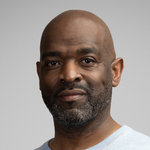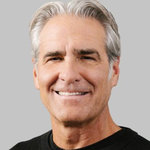
Nike Inc
NYSE:NKE

Nike Inc





In the mid-1960s, two visionary individuals – Phil Knight, a dynamic track athlete, and Bill Bowerman, a dedicated track coach – set in motion a venture that would transform into a global icon known as Nike, Inc. Initially operating under the name Blue Ribbon Sports, the company began by distributing Japanese-made footwear within the United States. The turning point came in 1971, when Nike unveiled its own line of shoes adorned with the now-famous Swoosh logo, symbolizing speed and movement. By leveraging innovative designs and endorsing charismatic athletes, such as Michael Jordan, Nike rapidly gained a foothold in the competitive athletic footwear and apparel market. The core of Nike's strategy has always been a relentless focus on branding, innovation, and strategic marketing, firmly positioning itself as a leader in this dynamic industry.
Today, Nike stands as a titan of the global sportswear industry, boasting an expansive portfolio that stretches beyond footwear to include apparel, equipment, and accessories across a myriad of sports. The company's business model revolves around a vertically integrated supply chain that ensures efficiency from design to sales, with a significant portion of manufacturing outsourced to international factories. Nike drives revenue through a mix of direct-to-consumer sales via their online platforms and brick-and-mortar stores, alongside traditional retail partnerships. Sponsorships and endorsements with top athletes keep Nike's brand at the forefront of consumer consciousness, sustaining the aspirational ethos that fuels their success. This strategic combination of innovation, market penetration, and endorsements solidifies Nike's dominant position and ensures its continued financial growth and cultural relevance.
Earnings Calls
In Q4 2024, Mastech Digital reported revenues of $50.7 million, up 10.2% year-over-year. Notably, the Data and Analytics Services segment surged by 26.2% to $10.3 million. Despite a slight decline in IT Staffing consultant numbers, gross profit grew to $14.7 million, marking a 30% increase, with a record gross margin of 29%. GAAP net income turned positive at $0.3 million, compared to a loss of $5.4 million last year. For 2025, the focus will shift towards enhancing offerings and capitalizing on AI-driven opportunities, guided by a commitment to sustainable growth and profitability.
Management

Heidi O'Neill is a prominent executive at Nike, Inc., known for her extensive and impactful career within the company. She has been with Nike for several decades and has held a variety of leadership roles that have greatly influenced the brand's growth and transformation. O'Neill joined Nike in 1998 and has since played a significant role in shaping the company's consumer-focused strategies. O'Neill has held several key positions including leading Nike's North America operations, where she drove significant regional growth and strengthened the brand's presence. She has also served as the President of Nike Direct, where she was instrumental in developing the company’s direct-to-consumer approach, enhancing digital commerce, and integrating physical retail with digital platforms. Known for her innovative approach to retail and her emphasis on customer experience, O'Neill has been a champion of leveraging data and analytics to meet consumer needs. She has been a driving force behind several successful campaigns and initiatives that have helped Nike maintain its position as a leader in the sports apparel industry. O'Neill’s career at Nike highlights her expertise in retail transformation, consumer engagement, and strategic brand management, making her a key figure in the company's ongoing evolution.

Craig Williams is the current President of Jordan Brand at Nike, Inc., a position he has held since January 2019. With a strong background in both the corporate and military sectors, Williams brings a diverse range of experiences to the role. Before joining Nike, Williams served as the Senior Vice President, Consumer Products Group at Coca-Cola, where he managed the company’s domestic business. His career at Coca-Cola spanned over a decade in various leadership roles that shaped his strategic and operational expertise. Before his time in the corporate world, Williams served as an officer in the United States Marine Corps, showcasing his leadership skills and dedication to service. His educational background includes an MBA from the University of Pennsylvania's Wharton School and a Bachelor’s degree in Physics from the United States Naval Academy. At Nike's Jordan Brand, he is responsible for driving the global growth strategy, working to expand the brand's reach while honoring its legacy in sports and culture. Williams focuses on connecting with consumers worldwide, leveraging the brand’s deep heritage and innovative future.

Elliott J. Hill served as a top executive at Nike Inc., where he contributed to several leadership roles throughout his career. Before announcing his retirement in 2020, Hill was the President of Consumer and Marketplace. In this capacity, he was responsible for overseeing Nike's global sales and operations. His leadership focused on enhancing the consumer experience and driving the brand's growth across various markets. Hill played an integral role in developing Nike's direct-to-consumer strategy, which includes its digital commerce and retail strategy. Throughout his tenure at Nike, he was instrumental in driving innovation and fostering connections with consumers. His efforts significantly influenced Nike's strategic direction and the strengthening of its brand presence worldwide. Having worked at Nike for over three decades, Elliott J. Hill's contributions were vital to the company's transformation and success in a constantly evolving retail landscape. His leadership exemplified a commitment to aligning the brand's mission with consumer expectations, helping the company maintain its position as a leading global sportswear brand.

Philip H. Knight is an American business magnate best known as the co-founder and former chairman and CEO of Nike, Inc., one of the world’s largest suppliers of athletic shoes and apparel. Born on February 24, 1938, in Portland, Oregon, Knight played a pivotal role in transforming Nike into a global powerhouse in the sports industry. Knight attended the University of Oregon, where he ran track under Coach Bill Bowerman. It was during this time that he developed an interest in running shoes. After earning his bachelor's degree in journalism in 1959, he served in the Army and later pursued an MBA at Stanford Graduate School of Business. His time at Stanford proved influential; a class project on starting a business became the blueprint for his later venture. In 1964, Knight and his former coach Bowerman each invested $500 to create Blue Ribbon Sports, a company that initially served as a U.S. distributor for the Japanese shoemaker Onitsuka Tiger, now ASICS. The relationship with Onitsuka dissolved by 1971, leading Knight to launch his own brand, which he named Nike, inspired by the Greek goddess of victory. That same year, the company's iconic Swoosh logo was designed by Carolyn Davidson, a graphic design student, for just $35. Under Knight’s leadership, Nike grew rapidly. His emphasis on innovative design, marketing, and branding helped launch successful product lines and secure endorsements from top athletes, boosting the company's profile. Nike's marketing campaigns, notably the "Just Do It" slogan, became cultural phenomena, reinforcing the brand’s position in the market. Knight served as Nike’s CEO until 2004 and as chairman until 2016, when he retired from the position. Despite stepping down from daily operations, he remains a prominent figure in the company as Chairman Emeritus. Through his career, Knight became one of the richest individuals in the world, with an estimated net worth of over $40 billion. In addition to his business ventures, Knight is known for his philanthropy. He has donated hundreds of millions of dollars to educational institutions, including Stanford and the University of Oregon, supporting various academic and athletic programs. His contributions have significantly impacted the development of facilities and the enhancement of educational opportunities at these schools.


Dr. Muge Erdirik Dogan is a notable executive in the corporate world, known for her remarkable contributions to Nike Inc. She has held significant leadership roles in the company, where her work has prominently influenced Nike's business strategies and market performance. Dr. Dogan earned her undergraduate degree from Stanford University and completed her Ph.D. at Stanford as well, which laid a strong foundation for her career in business management and strategy. Her educational background in engineering has played a crucial role in allowing her to bring a data-driven, analytical approach to her work. At Nike, she has been pivotal in guiding the company’s digital transformation efforts, focusing on integrating innovative technologies to enhance customer experiences and streamline operations. Her leadership emphasizes sustainability, innovation, and customer satisfaction, aligning with Nike's overall mission to bring inspiration and innovation to every athlete. Dr. Dogan’s strategic insights and forward-thinking vision have contributed to Nike maintaining its competitive edge in the sportswear industry. Her work continues to make a significant impact on Nike's growth initiatives and its adaptation to an ever-evolving market landscape.

Paul Trussell is a prominent figure in the financial and retail industry, currently serving as the Chief Financial Officer (CFO) at Nike, Inc. Known for his expertise in financial analysis and strategic planning, he plays a crucial role in overseeing Nike's financial operations and strategy. Before joining Nike, Trussell had a distinguished career in various finance and investment roles. He is recognized for his strong analytical skills and leadership in financial management, contributing significantly to Nike's financial health and strategic growth. His work involves managing corporate finance, investor relations, and ensuring the company’s fiscal strategies align with its broader business goals. Trussell's contributions are instrumental in driving Nike's continued success in the global market. He holds the Chartered Financial Analyst (CFA) designation, marking his commitment to maintaining the highest standards of integrity and competence in the finance field.

Rob Leinwand serves as the Vice President, Deputy General Counsel, and Corporate Secretary at Nike, Inc. In his role, he is responsible for overseeing the company's legal affairs, providing strategic legal advice, and ensuring corporate governance compliance. Leinwand's extensive experience in legal and corporate matters has been instrumental in navigating the complex global landscape in which Nike operates. His leadership and expertise contribute significantly to the company's legal strategy and operations.

KeJuan Wilkins is an experienced executive at Nike, Inc., known for his expertise in communications and public relations. As of the latest information, he serves as the Vice President of Enterprise Communications and Public Affairs at Nike. In this role, Wilkins is responsible for overseeing Nike's global corporate communications strategies, which include media relations, corporate storytelling, crisis management, and executive communications. Wilkins has been with Nike for over two decades, during which time he has held various positions in the communications and public affairs divisions, contributing significantly to the company's brand image and public perception. His leadership has been instrumental in navigating complex communications landscapes, and he has played a key role in managing Nike's messaging during major company events and initiatives. Wilkins is also known for his efforts in championing diversity and inclusion within the company and the broader business community. His work supports Nike's commitment to diversity, equity, and inclusion both internally and in the communities the company serves.
Ms. Nicole Hubbard Graham is an executive known for her significant contributions to Nike, Inc., where she has served as the Chief of Diversity, Equity, and Inclusion (DEI). In this role, she has been crucial in advancing Nike's DEI strategies and initiatives, focusing on creating a more inclusive and equitable environment within the company. Nicole's leadership is marked by her dedication to fostering a culture that values diversity, recognizing the importance of different perspectives and backgrounds in driving innovation and success. She has been instrumental in implementing policies and programs that aim to enhance diversity across all levels of the organization, ensuring that Nike remains a leader in promoting equity in the workplace. Her work involves collaborating with various departments to integrate DEI principles into Nike’s business practices, contributing to both internal organizational health and the brand's global impact. Under her guidance, Nike has launched initiatives designed to support underrepresented communities and promote social justice. Nicole Hubbard Graham's expertise and commitment to DEI have earned her recognition both within and outside the company, making her a pivotal figure in Nike's ongoing efforts to be a champion for diversity and inclusion in the corporate world.




















































 You don't have any saved screeners yet
You don't have any saved screeners yet

Greetings, and welcome to the Mastech Digital Q4 2024 Earnings Call. [Operator Instructions] As a reminder, this conference is being recorded. It is now my pleasure to introduce your host, Jenna Lacey, Manager of Legal Affairs for Mastech Digital. Thank you, Ms. Lacey, you may begin.
Thank you, operator, and welcome to Mastech Digital's Fourth Quarter 2024 Conference Call. If you have not yet received a copy of our earnings announcement, it can be obtained from our website at www.mastechdigital.com. With me on the call today are Nirav Patel, Mastech Digital's Chief Executive Officer; and Jack Cronin, our Chief Financial Officer.
I would like to remind everyone that statements made during this call that are not historical facts are forward-looking statements. These forward-looking statements include our financial growth and liquidity projections as well as statements about our plans, strategies, intentions and beliefs concerning the business, cash flows, costs and the markets in which we operate. Without limiting the foregoing, the words believes, anticipates, plans, expects and similar expressions are intended to identify certain forward-looking statements. These statements are based on information currently available to us, and we assume no obligation to update these statements as circumstances change.
There are statements -- there are risks and uncertainties that could cause actual events to differ materially from these forward-looking statements including those listed in the company's 2023 annual report on Form 10-K filed with the Securities and Exchange Commission and available on its website at www.sec.gov.
Additionally, management has elected to provide certain non-GAAP financial measures to supplement our financial results presented on a GAAP basis. Specifically, we will provide non-GAAP net income and non-GAAP diluted earnings per share, which we believe will provide greater transparency with respect to the key metrics used by management in operating the business. Reconciliations of these non-GAAP financial measures to their comparable GAAP measures are included in our earnings announcement, which can be obtained from our website at www.mastechdigital.com. As a reminder, we will not be providing guidance during this call nor will we provide any guidance in any subsequent one-on-one meetings or calls.
I will now turn the call over to Nirav for his comments.
Thanks, Jenna, and good morning, everyone. Today is my 45th day with Mastech Digital, and it's a privilege to address you today as Mastech Digital's Chief Executive Officer. Let me start by giving you a bit of my background and experience. I have well over 25 years of experience as a technology executive with a track record of scaling large and midsized organizations. I have held several prominent leadership roles throughout my career. Prior to joining Mastech Digital, I served for over 4 years as President and CEO of Bristlecone, an AI-powered pure-play supply chain transformation company.
And before that, I spent over 19 years at Cognizant, playing many executive roles, scaling multibillion-dollar businesses across its key industry segments and serving enterprise clients globally. It's been an incredible and busy first 45 days since stepping into my role at Mastech Digital. I'm about halfway through my first 100 days. And in addition to focusing on the execution of our plans, I have spent a considerable amount of time listening to our customers, partners, employees and investors. It is important for me to hear their perspectives and understand the expectations they have of us for the future.
What is clear to me is that we have a strong foundation and culture that is deeply rooted in customer focus. But what's also clear to me is that we are at an inflection point, both in terms of speed of change brought by the AI revolution across our enterprise customers and the changing landscape of technology service providers in this rapidly evolving AI-first world. I believe that winning in the future will require organization like ours to have a sharper execution focus and the founder's mindset for unlocking growth. We cannot ignore the evolving landscape shaping our industry.
We are seeing the uncertainties created from a changing macro environment leading to greater caution and slower decision-making. Companies are carefully assessing interest rates, liquidity and market conditions to ensure their technology investments are both strategic and sustainable. That being said, I have no doubt that the AI revolution is real. Across industries, AI, automation and data-driven decision-making are no longer just concepts. They are being actively embraced and internalized. Organizations are moving beyond exploration, building proof of concepts, integrating AI into core processes and in many cases, rapidly scaling these capabilities to drive competitive advantage.
While the path forward may not be linear, the appetite for AI-driven solutions remains strong. Emerging AI models like OpenAI, Cloud, Lama and DeepSeek are reinforcing the fact that AI is reshaping how enterprises work, optimize and innovate. While Jack will provide a detailed update, I wanted to share a few thoughts on our performance in the fourth quarter of 2024.
We have made meaningful progress delivering revenue and margin growth with data and analytics seeing particularly strong acceleration. This performance reinforces our conviction that AI-driven digital modernization is the next frontier and that we are well positioned to capture this momentum.
I sum up the fourth quarter in 2 words: execution and transition. We believe that 2025 will be the year we begin our transformation, one that helps enterprises reimagine themselves and transition into AI-first organizations. This is just the beginning of that journey. Looking ahead, we believe our long-term success will be driven by 3 principles that define who we are and where we are going. First, we believe we must lead with a sense of urgency. The window to establish ourselves as a leading technology provider that helps enterprises reimagine and transform into AI enterprises will not stay open forever. In this space, speed is not just an advantage, it is the difference between leading and lagging.
Second, we believe we must build a compelling and relevant portfolio of offerings. Differentiation will be key. We are not just creating innovative solutions, but solutions that are essential to how businesses operate in the AI era. We believe our data modernization and staffing solutions must work together to drive deeper client engagement. It's not enough to participate. We believe we must integrate our strengths into a seamless high-value offering that sets us apart.
Third, we believe we must execute with discipline. Growth is only meaningful when it is sustainable and profitable. We intend to drive efficiency across the organization, operate with accountability and ensure that every investment we make and every position we take creates lasting value for our customers, employees and shareholders. I recognize that building confidence in the leadership takes time and that it must be earned through clear execution and transparency. My commitment to you is simple. I plan to be direct about where we are, clear about where we need to go and decisive about how we get there. Mastech Digital is not starting from scratch. We believe we have the right foundation, the right talent and the right market opportunity. What we need is the runway to refine our strategy, sharpen our execution and create a growth story that is truly our own.
Thank you for your time and trust. I will now hand it over to Jack.
Thanks, Nirav, and good morning, everyone. Our fourth quarter 2024 financial results reflected the positive momentum that we experienced over the last 9 months of 2024.
Consolidated revenues during the fourth quarter totaled $50.7 million, a year-over-year increase of 10.2% compared to the corresponding quarter of 2023. Our Data and Analytics Services segment reported revenues of $10.3 million in Q4 2024, which were 26.2% higher on a year-over-year basis and 9.4% sequentially higher than our revenue performance in the previous quarter. Order bookings in Q4 2024 totaled $11 million, which was somewhat below our expectations.
In the fourth quarter of 2024, our IT Staffing Services segment had revenues of $40.5 million, achieving year-over-year revenue growth of 6.8%. During the quarter, our billable consultant base declined by 63 consultants, which is generally in line with previous years due to seasonal high assignment ends. As expected, this will have some impact on our Q1 2025 revenue results.
Consolidated gross profit dollars totaled $14.7 million in Q4, which exceeded the corresponding quarter of 2023 by $3.4 million or a 30% increase, driven by higher revenue volumes as well as increasing gross margin percent. Our Q4 2024 gross margin percent was a company record 29% as both of our business segments had significant margin expansion from the previous year.
In our Data and Analytics Services segment, gross margins as a percent of revenue increased by 480 basis points to 49.5% in Q4 2024 compared to 44.7% in the fourth quarter of 2023. This increase reflected higher utilization and better project delivery.
In our IT Staffing Services segment, gross margins were up 350 basis points in Q4 compared to Q4 2023 due to an increase in direct hire revenues, a favorable medical claim experience in our self-insured health care program and higher margins on new assignments. GAAP net income for the fourth quarter of 2024 totaled $0.3 million or $0.02 per diluted share compared to a net loss of $5.4 million or a negative $0.46 per share in Q4 of 2023.
Non-GAAP net income for Q4 of '24 was $2.8 million or $0.23 per diluted share compared to $1.3 million or $0.11 per diluted share in the '23 fourth quarter. SG&A expense items not included in non-GAAP financial measures, net of tax benefits are detailed in our fourth quarter earnings release for all periods presented and are available on our website.
Highlights of our full year 2024 results included the following: 2024 revenues were $198.9 million, which was largely in line with our full year 2023 revenues. Gross margins in '24 totaled 27.9% compared to 25.4% in 2023. Our Data and Analytics Services gross margin percent increased by 560 basis points on a year-over-year basis. And in our IT Staffing Services segment, our gross margin percent increased by 160 basis points.
GAAP diluted earnings per share in 2024 was a profit of $0.28 versus a loss of $0.61 in 2023. Non-GAAP diluted earnings per share in '24 totaled a profit of $0.71 compared to a profit of $0.44 in 2023, an increase -- an improvement of 61%.
At December 31, 2024, our liquidity and overall financial position remains solid. Today, we have no bank debt outstanding. We have $27.7 million of cash balances on hand. We have cash availability of $22.6 million under our revolving credit facility and our days sales outstanding measurement at December 31, 2024, totaled 52 days, which was well within our targeted range.
Devin, that completes our prepared comments. We'd like to open it up for questions now.
[Operator Instructions] Our first question comes from the line of Lisa Thompson with Zacks Investment Research.
We're all looking forward to an exciting 2025. I know there's a lot of possibilities out there. Could you talk a little bit about what your thinking is of how you're going to approach increasing staffing and D&A? Is there going to be any strategy changes besides the obvious of trying to incorporate AI into your whole service offerings? How is that going to work?
Sure, Lisa. Thank you for the question. Nirav here. I'll take that one. Look, I'm taking a very, very structured approach, Lisa, to defining our long-term strategy. And I sort of -- I've just stepped into my role and my immediate priority is to deeply learn about our business and engage with our teams, customers and partners, and to really have a chance to assess our starting point in terms of our challenges and opportunities.
What I can say with confidence that Mastech has a very, very strong foundation. Our focus will be on accelerating growth, driving excellence and enhancing our offerings. But I am going to take a little bit of a structured approach in defining this strategy, and I look forward to be sharing more specific details sometime later half of this year as we refine our plans and execution road map.
Okay. I'm also curious that there's a lot of talk about government efficiency now. Do you see any opportunities in there? If there ever is an entity that needs data modernization, I think that would be the one.
Clearly, government opportunities are something that -- especially in D&A that we look at for sure. So I guess the answer to your question is, yes.
Okay. All right. Could you do happen to have offhand how many employees you ended the year with?
Yes, I do. We ended the year with total employees of both segments 1,816. And just as a point of reference, last year, we had -- we ended the year 2023 with 1,648.
Okay. So that's a pretty big increase.
Yes, not bad.
All right. Yes, yes. And do you have any thoughts about spending this year? Is it going to be pretty much steady? Or is there any investment you need to do?
Spending like on SG&A cost or spending on CapEx?
Well, either, but mostly SG&A.
Okay. SG&A, yes, our objective in SG&A is to continue to maintain our SG&A expense at the same percentage that we had in 2024 for 2025. So that's the objective. And it's going to be a little bit by quarter-to-quarter. I would say that probably in the first half of 2025, we're going to probably not reach that goal because I think we are going to be hiring some of the missing pieces related to a new growth strategy. But by the end of the year, with what we believe would be increases in revenue as well as maybe some cost savings initiatives, we should come in at that objective.
And from a CapEx standpoint, we don't have a whole lot of capital expenditures. I mean we're -- maybe it's certainly under $1 million. So that will still hold, clearly under $1 million.
Okay. And you're still thinking 28% tax rate?
Well, the 28% tax rate, it encompasses like a 123R expense true-up based on the gains that our employees enjoy from exercising their shares versus the company expense related to those shares. So in the last year -- well, let's say, the last 1.5 years, our true-up was negative, which negatively impacts the tax rate. That's why we were 28%. In fourth quarter, our stock price was a little bit higher and a lot of the exercises came in at gains that were greater than the 123R expense, the compensation expense. And actually, our tax rate was actually lower than 25%. So a lot of that depends on some of these unusual true-ups that we have to make from a tax perspective.
Our next question comes from the line of Marc Riddick with Sidoti & Company.
I wanted to touch a little bit on some of the commentary around the bookings during the quarter. And maybe if you could spend maybe a little bit of time sort of giving us a picture on sort of how that progressed, either whether it was -- whether by monthly or were there changes in the demand pre post election? Was -- did the bookings look different based on client verticals? Anything that you could sort of share there as to maybe what you were seeing during the fourth quarter? And then maybe any thoughts as to maybe how the year has begun as far as client activity would be really helpful.
Sure, Marc. I'll take a stab at that. When we looked at our pipeline at the beginning of Q4 and looking at our pipeline, we had a range of where we thought we would land in total bookings and the $11 million came short of that. And we had some project delays because there is a little bit, in particular, in D&A, there's a little bit of uncertainty in the marketplace. I mean we saw a few clients where we thought they were going to give us bookings in Q4, and they delayed those.
And so there is -- we clearly see some uncertainty in the marketplace. What's the driver of that uncertainty? I mean, we can guess, is it a tick up in inflation? Is it political concerns, unknowns. But whatever the reason, our clients seem to be less eager to give booking deals immediately. They seem to have a longer cycle -- sales cycle on that before they let a booking transpire.
Okay. And is there -- and I know this is a bit granular, but I was just sort of curious, is there anywhere in particular, whether it's certain types of clients? Or do you think that's sort of more of an across-the-board kind of situation right now?
I would say across the board. I would say across the board. I mean we have some bookings on financial service clients. We've had Q4 bookings on health care clients. It's just that we didn't get the amount that we expected given the robust pipeline that we had.
Okay. And then one of the things I did want to highlight it in your -- in the press release was around the extension of the share repurchase program, which was initially scheduled to end earlier this month and has now been extended to February of '26. Just wondered if you could share any thoughts there. I can understand that, Nirav, you've been there for like 45 days. I can understand that you get to have some time to sort of work through some of the prioritizations. But I was just sort of wondering if you could share any thoughts on that share repurchase extension there.
Yes. I mean the Board made that decision, right? And we had this program for 2 years prior. And during that 2-year period, we experienced a number of extended blackout periods where we weren't able to repurchase our shares. They were like corporate-related transactions and events. we think most of that is behind us, and we have 423,000 shares remaining in the share buyback program, we would like to capitalize on some of those. So I do think that you're going to see less blackout periods and more buyout volume in 2025 compared to last year.
Great. And then the last thing for me as far as potential uses of cash, obviously, a very strong balance sheet to work with at the moment. I was wondering if you could talk about any thoughts on potential acquisitions and maybe what that pipeline may look like now, whether valuations have changed in the last few months or we've seen a few small deals in the space, but maybe sort of comment on maybe what you're seeing out there.
Sure, Marc. This is Nirav here. I'll take that first. So Marc, I think, look, like I said that we are certainly in the phase where we are sort of starting to think through our go-forward strategy, and we are sort of trying to really get a little bit more clarity on that. And I think like I said earlier, right, I just stepped in on my role. And in terms of my go-forward strategy, my immediate priority is really to listen and learn.
And I think I am taking a fairly structured approach of thinking through our long-term approach strategy, which kind of will include elements of organic and inorganic plays and so forth. But to me, I think we're getting the direction for the company in terms of where we are headed lays an important emphasis before we would sort of activate or execute on any of those transactions. But please feel free to chime in, Jack, if you want to share your thoughts.
The only thing that I would say, Marc, is M&A is part of our growth strategy for sure. It always has been. It's just that when you're changing leadership, it's hard to decide exactly what you want to purchase. So I think Nirav...
No, that's...
I think once in a year...Go ahead, Marc?
No, I was just going to say we're certainly looking forward to working with you going forward and looking forward to your vision for the company going forward. And that's about it for me today.
Thank you, Marc. I'm equally excited and looking forward to working with you.
[Operator Instructions] There appear to be no further questions at this time. I'd like to turn the floor back over to Mr. Patel for closing remarks.
Thank you, Devin. If there are no additional questions, I thank you for your time, and I look forward to talking with you in early May for our Q1 2025 earnings call.
This concludes today's teleconference. You may disconnect your lines at this time. Thank you for your participation, and have a wonderful day.